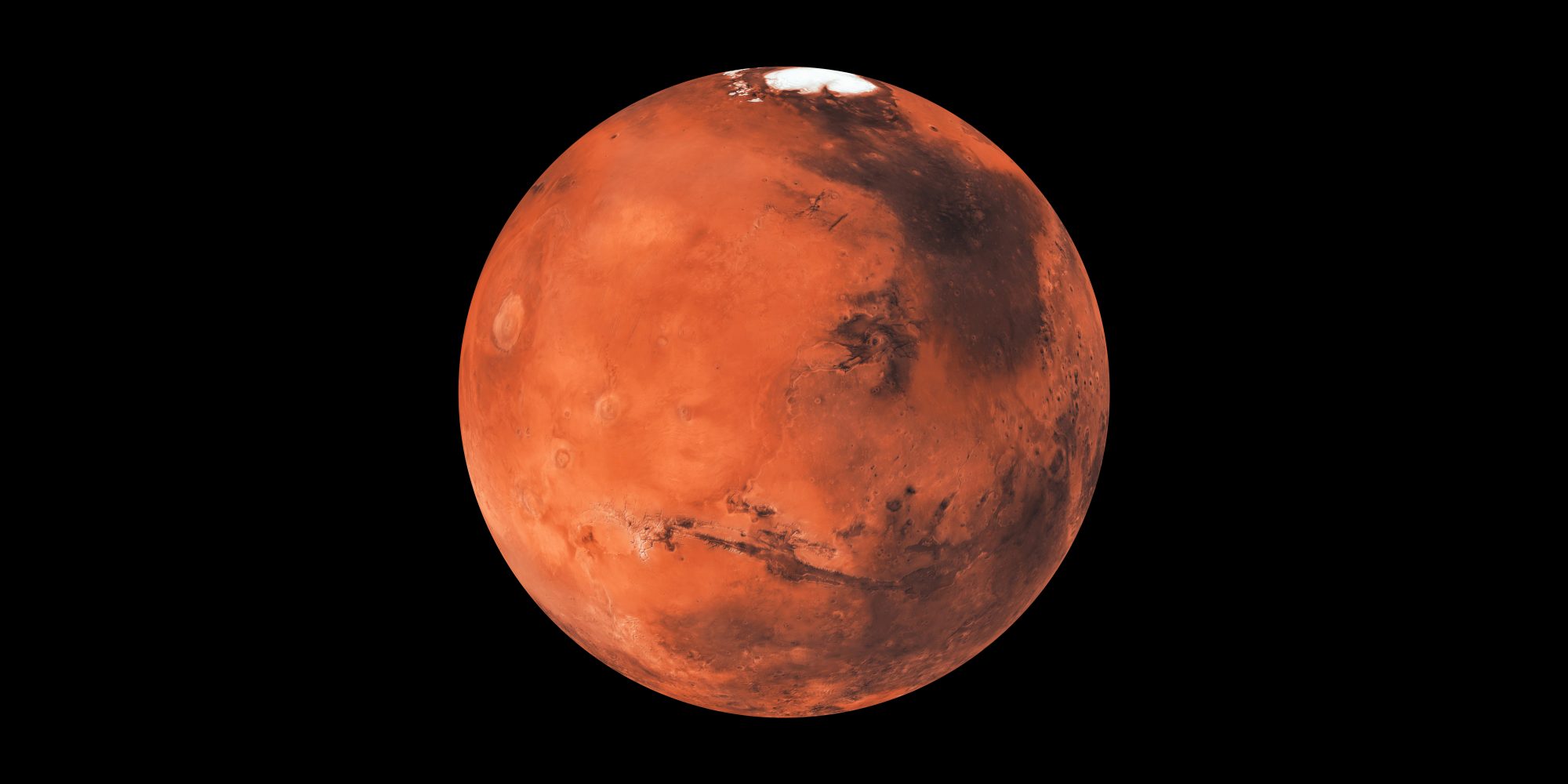Mars, named after the Roman god of battle, has long been seen as a forerunner in the night sky. The fourth planet from the Sun, with liquid water on its surface and possibly life, could have been mistaken for Earth’s smaller twin billions of years ago. However, it is now a desolate wasteland. Overall, Mars is a terrestrial planet with a thin atmosphere, impact craters, valleys, dunes, and polar ice caps on its surface.
In this article, we will look at some more interesting facts about Mars.
Planetary Facts

Mars is the seventh-largest planet in our solar system, with a diameter of nearly half that of Earth. The table given below depicts some other essential details about the planet.
| Mean distance from Sun | 227,943,824 km (1.5 AU) |
| Martian year (sidereal period of revolution) | 686.98 Earth days |
| equatorial radius | 3,396.2 km |
| surface area | 1.44 × 108 km2 |
| Mass | 6.417 × 1023 kg |
| Rotation period (Martian sidereal day) | 24 hr 37 min 22.663 sec |
| Mean surface temperature | 210 K (−82 °F, −63 °C) |
| Number of known moons | 2 |
Physical Characteristics
Loose dust and rock, rich in iron minerals, cover the surface, giving the planet its vivid rust colour. The iron minerals oxidise, or rust, causing the soil to turn red. In addition, Mars is home to the highest peak and the deepest, longest valley in the solar system. Olympus Mons, one of the solar system’s greatest volcanoes, is also on the red planet.
The video below will give you a virtual tour of this mysterious planet.
Atmosphere
Mars’ atmosphere is composed primarily of carbon dioxide, 1.93 per cent argon, 1.89 per cent nitrogen, and traces of water and oxygen. The atmosphere is dusty, with particulates measuring 1.5 metres in diameter. This matter gives the Martian sky a tawny hue when viewed from the surface. Furthermore, because of the iron oxide particles suspended in it, it may take on a pink colour.
Mars lost its magnetosphere 4 billion years ago, possibly due to numerous asteroid strikes. As a result, the Martian ionosphere interacts directly with the solar wind, lowering air density by removing atoms from the outer layer. The resulting mean surface pressure is only 0.6% of Earth’s (101.3 kPa). Furthermore, because Mars’ surface gravity is only approximately 38% that of Earth, the scale height of the atmosphere is roughly 10.8 kilometres, which is higher than Earth’s 6 kilometres.
Climate on Mars

Due to the identical tilts of the two planets’ rotational axes, Mars’ seasons are the most Earth-like of all the planets in the Solar System. When it’s summer in the Southern Hemisphere and winter in the north, Mars is near perihelion, and when it’s winter in the Southern Hemisphere and summer in the north, it’s near aphelion. However, the Martian seasons are roughly twice as long as Earth’s due to its greater distance from the Sun. Furthermore, in the equatorial summer, Martian surface temperatures range from lows of around -128°C to highs of up to 35°C because the planet receives only 43% of the sunlight that Earth does.
Search for Life on Mars

Since the first telescopic observations of the planet, people have questioned whether life existed on Mars, and what that life might have been like on that planet. Early observers were particularly interested in intelligent life, but currently, the focus is on the genesis of life, microbial communities, and their survival constraints.
Telescopic investigations and deployed probes have continued scientific efforts for evidence of life since the 19th century. However, there has been no evidence of previous or contemporary life on Mars yet. The hunt for signs of habitability, taphonomy, and organic molecules on the planet is now a top priority for NASA and the European Space Agency (ESA). In fact, following, the discovery of surface liquid water, the Curiosity, Perseverance, and Opportunity rovers began looking for signs of past life, such as a past biosphere based on autotrophic, chemotrophic, or chemolithoautotrophic microorganisms. Furthermore, organic chemicals discovered in sedimentary rocks and boron discovered on the planet are of interest since they are precursors of prebiotic chemistry. These findings, combined with prior evidence that liquid water was available on ancient Mars, add to the case for the planet’s habitability.
However, the Martian soil is rich in perchlorates, which are harmful to microorganisms, and the surface of Mars is currently bathed in ionising radiation. As a result, the general agreement is that if life exists or ever existed on Mars, it would be best maintained in the subsurface, away from the harsh surface processes of today.
Final Thoughts
Mars has been the target of mankind’s curiosity since ancient times. Due to this, we have taken the necessary steps to explore and study the planet. To date, several satellites and robots have relayed essential information about the red planet back to Earth, enabling us to determine if life existed on it. Furthermore, in future, humans will eventually join robots on the red planet. NASA has indicated that returning people to the moon will serve as a stepping stone to Mars. Elon Musk, the founder and CEO of SpaceX, is developing the Starship, a gigantic vehicle that will be used to take humans to Mars.
Now the question is, will humanity establish a scientific facility on Mars’ surface, similar to those found in Antarctica? What impact will human activity have on the red planet and our efforts to find life there? We’ll have to wait and see. Mars, though, will continue to dominate the human imagination, a gleaming red beacon in our skies and stories, no matter what.




